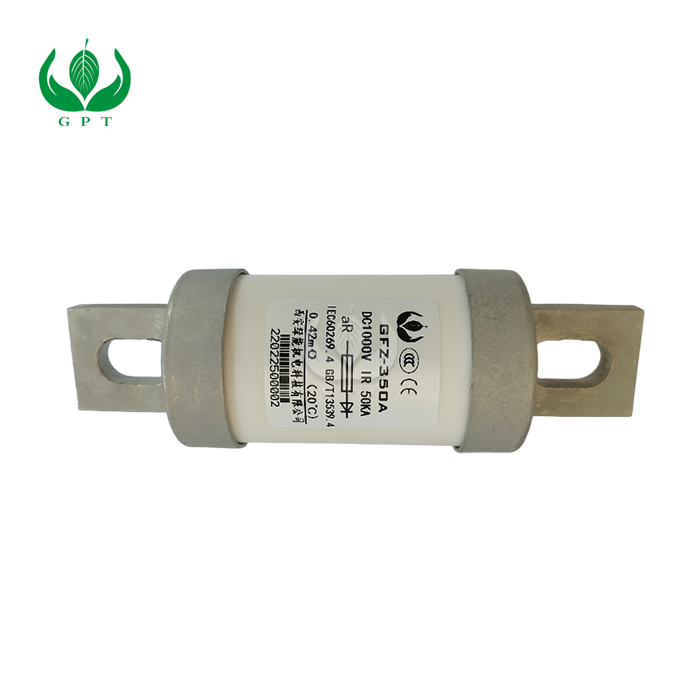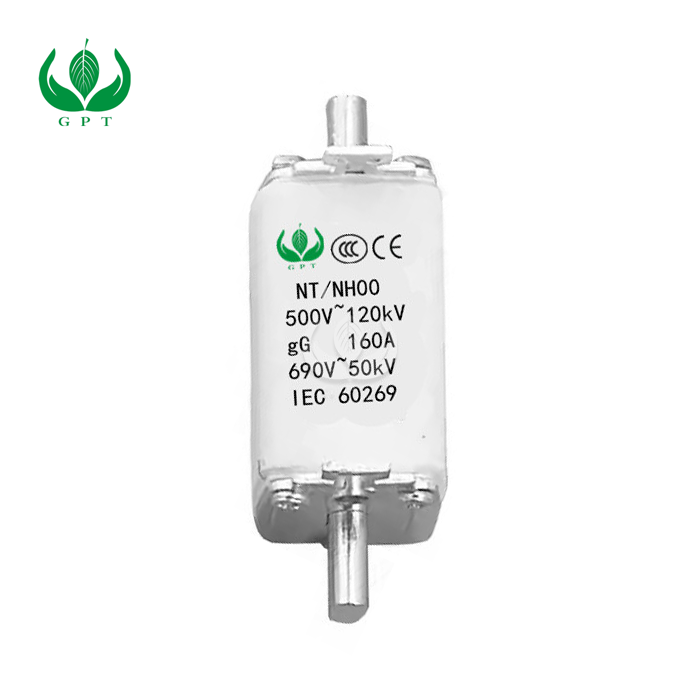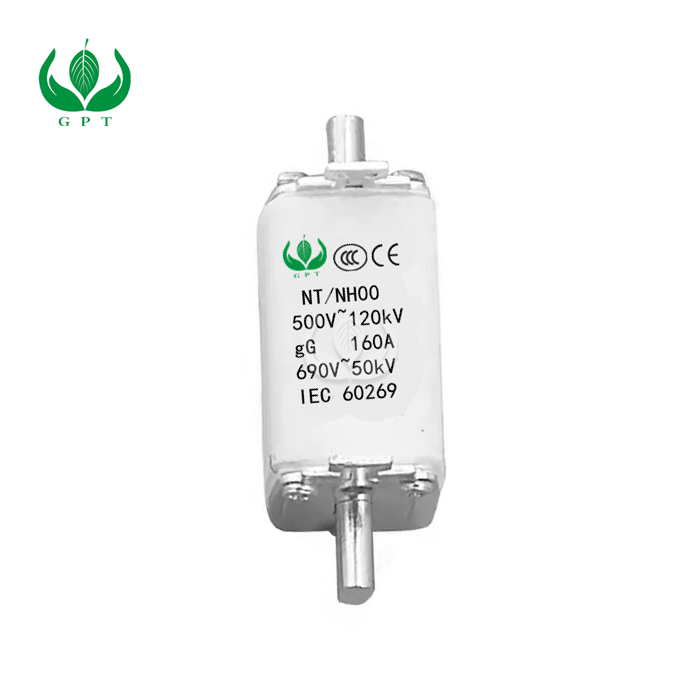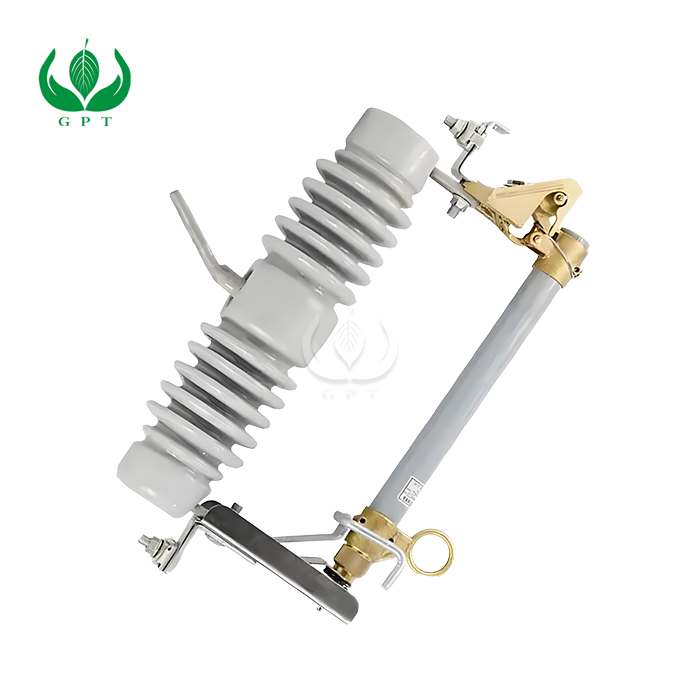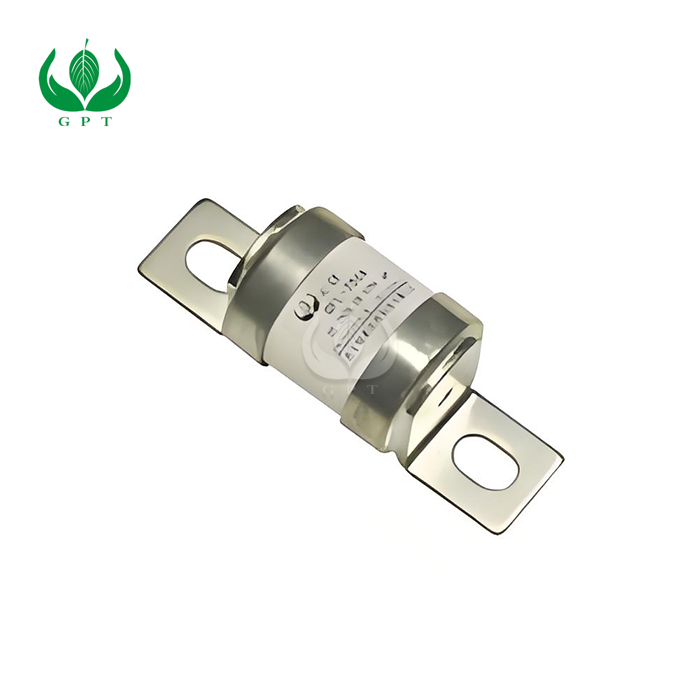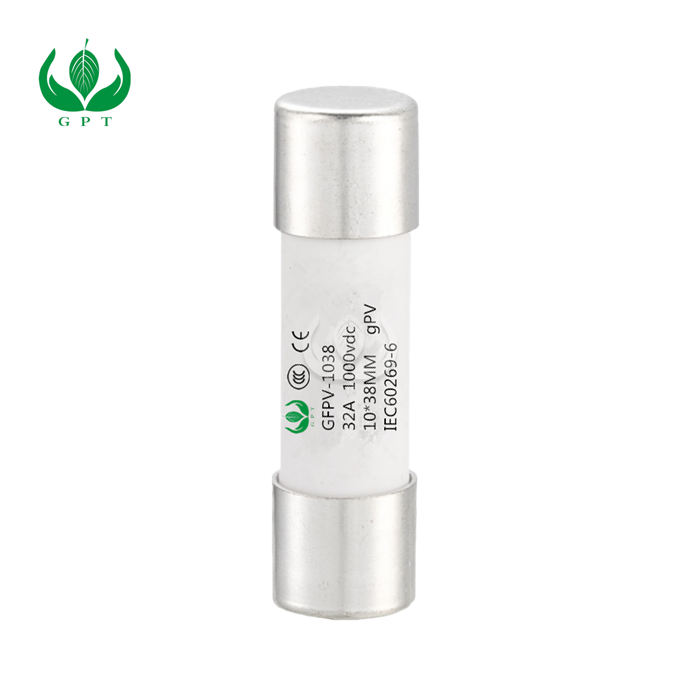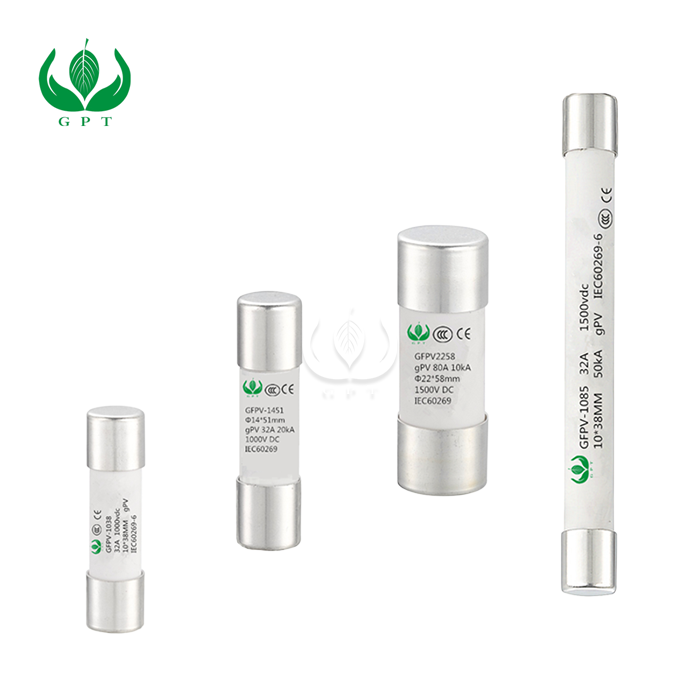A DC charging station fuse is a specialist component that protects electric car charging infrastructure against electrical overloads and short circuits. These fuses function by blocking harmful current flows that exceed acceptable operating limits, therefore preventing equipment damage and associated safety risks. Unlike normal fuses, DC versions deal with the special issues of direct current, such as prolonged electrical arcs that necessitate complex quenching mechanisms. They are important because they safeguard expensive charging equipment, assure user safety, and keep EV charging networks running smoothly. As the global use of electric vehicles rises, these fuses become critical for preserving charging infrastructure investments and facilitating the shift to sustainable transportation.
The Fundamentals of DC Charging Station Fuses
Core Components and Construction
DC fuses for charging stations feature several key elements that enable their protective function. The fusible element, typically made from silver or copper alloys, provides the sacrificial component that melts under excessive current. This element sits within a ceramic or fiberglass housing filled with quartz sand or similar arc-quenching materials. End caps made from plated brass or copper ensure solid electrical connections while providing mechanical strength.
The construction must withstand harsh environmental conditions, including temperature extremes, humidity, and vibration. Modern designs incorporate sealed housings that prevent moisture ingress while allowing for thermal expansion. Some advanced models include visual indicators that show when the fuse has operated, simplifying maintenance procedures.
Material selection plays a crucial role in performance. High-purity metals ensure consistent melting characteristics, while specialized coatings prevent oxidation. The housing materials must provide excellent electrical insulation while maintaining structural integrity under thermal stress.
Operating Principles and Arc Extinction
When current exceeds the fuse rating, the fusible element heats up rapidly due to I²R losses. Once it reaches its melting point, the element vaporizes, creating an electrical arc. In DC systems, this arc tends to sustain itself because there's no natural current zero like in AC systems.
Arc extinction in DC fuses relies on several mechanisms. The surrounding sand absorbs energy from the arc, cooling it rapidly. As the metal vapor expands into the sand, it increases the arc resistance dramatically. Some designs incorporate magnetic blowout features that stretch the arc, increasing its length and resistance until it extinguishes.
The time-current characteristic determines how quickly the fuse operates under different overload conditions. Fast-acting types respond within milliseconds to severe faults, while time-delay versions tolerate temporary overloads during normal charging cycles. This selectivity prevents nuisance interruptions while maintaining protection.
Integration with Charging Infrastructure
DC charging station fuses integrate seamlessly into various points within the charging system. Primary protection often sits at the grid connection point, safeguarding the entire installation. Secondary fuses protect individual charging dispensers, while tertiary protection might guard specific power conversion stages.
Coordination between multiple fuse levels ensures selective operation. When a fault occurs, only the fuse closest to the problem should operate, maintaining service to unaffected areas. This requires careful selection of ratings and characteristics throughout the system hierarchy.
Modern charging stations increasingly incorporate smart monitoring that tracks fuse status. These systems can detect degradation before failure occurs, enabling predictive maintenance. Some installations use electronic monitoring to log operating conditions, helping optimize protection schemes based on actual usage patterns.
Critical Safety and Performance Benefits
Preventing Catastrophic Failures
Electrical faults in high-power DC systems can escalate rapidly without proper protection. A short circuit in a charging cable could generate thousands of amperes within milliseconds. Without fuse protection, this energy could cause fires, explosions, or severe equipment damage.
DC fuses act as sacrificial barriers, absorbing fault energy before it reaches dangerous levels. They protect sensitive power electronics like inverters and rectifiers that cost tens of thousands of dollars. By limiting fault current magnitude and duration, fuses prevent thermal damage to cables, connectors, and other components.
Real-world incidents demonstrate these risks. Charging stations without adequate protection have experienced fires that destroyed entire installations. Proper fuse selection and installation virtually eliminate these catastrophic scenarios, protecting both equipment and human life.
Enhancing System Reliability and Uptime
Beyond emergency protection, DC charging station fuses contribute to overall system reliability. They prevent minor issues from cascading into major failures. A degraded cable connection might cause intermittent overcurrents that, without fuse protection, could damage power electronics over time.
Fuses also enable safer maintenance procedures. Technicians can work on de-energized sections knowing that fuse protection prevents accidental energization. This confidence translates into faster repairs and reduced downtime.
The economic impact of reliability cannot be overstated. Charging station operators depend on high availability to generate revenue and maintain customer satisfaction. Every hour of downtime represents lost income and frustrated EV drivers who might choose competitors. Proper fuse protection minimizes these disruptions.
Supporting Grid Stability and Power Quality
As EV charging networks expand, their impact on electrical grids grows significantly. Large charging stations can draw megawatts of power, creating substantial loads that affect grid stability. DC fuses help manage these impacts by preventing fault conditions that could propagate into the wider network.
During grid disturbances, charging stations must disconnect safely without creating additional problems. Fuses provide backup protection when electronic controls fail, ensuring clean disconnection. This becomes especially important in areas with high renewable energy penetration, where grid conditions fluctuate more frequently.
Power quality benefits extend to neighboring facilities. By containing faults within the charging station, fuses prevent voltage sags and interruptions that could affect nearby businesses or residences. This good neighbor behavior helps maintain community support for charging infrastructure expansion.
Selection, Installation, and Maintenance Guidelines
Technical Selection Criteria
Voltage rating selection starts with understanding system maximum values. DC charging systems operate at various levels, from 400V for slower chargers to 1000V or higher for ultra-fast charging. The fuse voltage rating must exceed the maximum system voltage with appropriate safety margins.
Current rating determination involves analyzing normal operating loads and potential overload scenarios. Charging stations experience variable loads as vehicles connect and disconnect. The fuse must handle peak currents during normal operation while providing protection against genuine faults.
Breaking capacity represents the maximum fault current the fuse can safely interrupt. This requires fault current calculations considering supply transformer capacity, cable impedances, and potential DC sources like battery backup systems. Inadequate breaking capacity risks catastrophic fuse failure during major faults.
Environmental ratings matter in outdoor installations. Fuses must withstand temperature extremes, humidity, pollution, and UV exposure. Enclosed stations might require different specifications than exposed equipment. Altitude also affects ratings due to reduced air density affecting cooling and insulation properties.
Professional Installation Practices
Proper mounting ensures reliable operation and heat dissipation. Fuses generate heat during normal operation that must dissipate to prevent premature aging. Mounting orientation, spacing, and ventilation all affect thermal performance. Manufacturers provide specific guidelines that installers must follow carefully.
Connection quality critically affects long-term reliability. Poor connections create resistance that generates heat, potentially causing nuisance fuse operations or connection failure. Proper torque values, clean contact surfaces, and appropriate hardware prevent these issues. Some installations benefit from periodic thermal imaging to detect developing problems.
Coordination with other protective devices requires careful planning. Circuit breakers, contactors, and electronic protection must work together seamlessly. Time-current coordination studies ensure selective operation under various fault scenarios. This often requires specialized software and expertise to implement correctly.
Preventive Maintenance Strategies
Regular inspection programs catch problems before they cause failures. Visual checks identify obvious issues like corrosion, discoloration, or physical damage. More detailed inspections might include resistance measurements to detect degraded connections or fuse elements.
Environmental factors influence maintenance frequency. Coastal installations face salt corrosion requiring more frequent attention. Desert locations might experience sand ingress problems. Urban areas could see pollution accumulation affecting insulation properties. Maintenance schedules must reflect these local conditions.
Replacement strategies balance reliability against cost. Some operators replace fuses on fixed schedules regardless of condition. Others use condition monitoring to optimize replacement timing. The approach depends on factors like accessibility, criticality, and failure consequences. Critical installations might warrant conservative replacement policies.
Conclusion
DC charging station fuses are critical safety components in current EV infrastructure. They secure important equipment, assure user safety, and provide dependable charging services. As the popularity of electric vehicles grows, appropriate fuse selection and maintenance become increasingly crucial. Understanding their operation allows stakeholders to make more informed judgments regarding protection tactics. Whether you're constructing new installations or maintaining existing ones, investing in high-quality fuse protection pays off in terms of increased dependability and safety. The future of sustainable mobility is dependent on strong infrastructure, and fuses play a critical part in that foundation.
FAQs
What makes DC fuses different from AC fuses?
DC fuses must handle sustained electrical arcs since direct current doesn't naturally cross zero like alternating current. They use specialized arc-quenching materials and designs to extinguish arcs reliably.
How do I know what size fuse my charging station needs?
Sizing depends on maximum operating current, voltage levels, and fault current availability. Consult equipment specifications and perform proper electrical calculations. Professional guidance ensures correct selection.
How often should charging station fuses be replaced?
Replacement frequency varies with operating conditions and manufacturer recommendations. Regular inspections help identify when replacement becomes necessary. Some facilities use predictive maintenance based on operating history.
Your Trusted DC Charging Station Fuse Manufacturer | Green Power
Xi'an Green Power Technology Co., Ltd. stands as a leading supplier of high-quality DC charging station fuses and comprehensive protection solutions. Our factory leverages over 20 years of expertise in fuse manufacturing for EV charging, photovoltaic, and energy storage applications. With certifications including ISO9001, IATF16949, CE, and TUV, we deliver reliable products meeting global standards. As your professional manufacturer, we provide customized solutions, competitive pricing, and responsive technical support. Contact our team at fusemaker@163.com to discuss your DC fuse requirements.
References
International Electrotechnical Commission. "IEC 60269-6:2020 Low-voltage fuses - Part 6: Supplementary requirements for fuse-links for the protection of solar photovoltaic energy systems." Geneva: IEC Publications, 2020.
Institute of Electrical and Electronics Engineers. "IEEE 946-2020 Recommended Practice for the Design of DC Power Systems for Stationary Applications." New York: IEEE Standards Association, 2020.
National Fire Protection Association. "NFPA 855 Standard for the Installation of Stationary Energy Storage Systems." Quincy: NFPA Publications, 2023.
Underwriters Laboratories. "UL 2579 Standard for Low Voltage Fuses - Fuses for Electric Vehicle Charging System Protection." Northbrook: UL Standards, 2021.
Society of Automotive Engineers International. "SAE J1772 Electric Vehicle and Plug-in Hybrid Electric Vehicle Conductive Charge Coupler." Warrendale: SAE Publications, 2022.
Electric Power Research Institute. "DC Fast Charging Infrastructure: Guidelines for Installation and Operation." Palo Alto: EPRI Technical Reports, 2023.



_1752570870823.webp)
